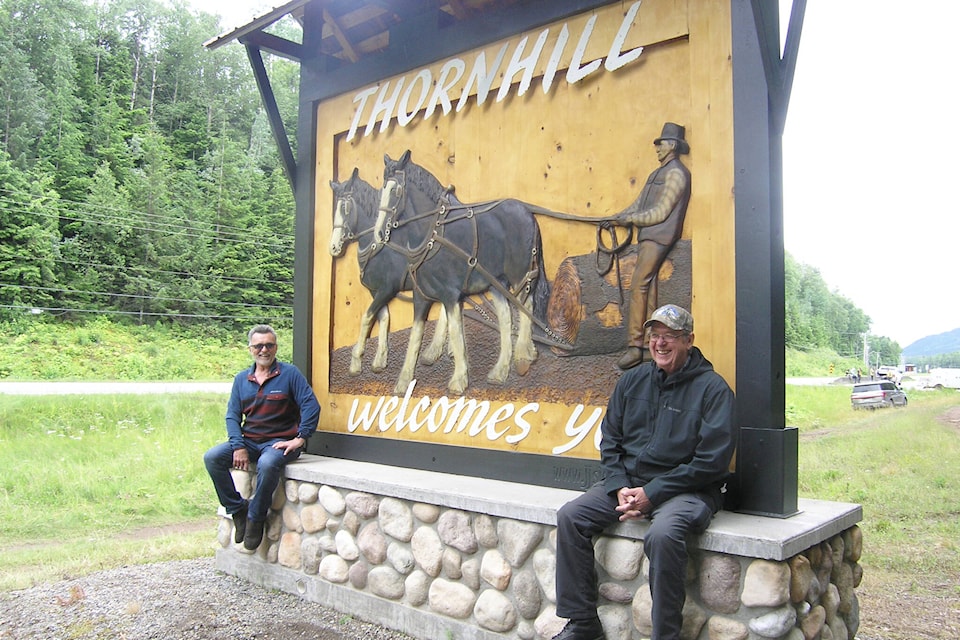The Kitimat-Stikine regional district is inviting a provincial government official to a meeting to discuss the ins and outs of the possibility of Thornhill splitting off from the regional district and becoming a standalone municipality.
Regional district directors gave their approval to the invitation Feb. 16 building upon a request from Thornhill regional district director Ted Ramsey to gather a summary of past studies and provide a history of previous attempts to create a different governing structure for the community.
Ramsey returned to the position of Thornhill director after a four-year absence in the 2022 elections under a platform of moving Thornhill toward municipal government status.
A detailed summary of past events of how Thornhill might be governed as prepared by senior regional district official Ted Pellegrino reveals more than 50 years of mixed results.
The early 1970s
After the creation of the Regional District of Kitimat-Stikine in 1967, Thornhill residents began asking for municipal services such as water and fire protection.
There was more of an appetite for incorporation in lower Thornhill than upper Thornhill which then had a more rural and sparser population.
But self-governing efforts stalled and, instead, the provincial government approved Thornhill to br declared as its own entity, known as Area E, within the regional district.
The 1990s
Governance options arose again in 1995 and they weren’t restricted to Thornhill. The province provided the money to look at both a Thornhill incorporation and a merger of Terrace, Thornhill and other rural areas to create a new municipality.
A resulting study looked at taxation implications for Thornhill and area residents such as policing and road maintenance as well as paying for a municipal government-style structure.
The study concluded an independent Thornhill would result in property tax increases of 110 per cent to pay for the services expected from a municipal government.
Terrace and regional district officials ultimately decided to put only the merger option to voters in a referendum in October 1997. Braun’s Island residents as well as those surrounding the airport were included the merger proposition.
Thornhill and rural residents rejected the idea by a majority of 58 per cent while Terrace residents voted 87 per per cent in favour.
A majority approval was required from each voting group and with Thornhill and rural residents saying ‘no’, that ended the idea of any governing status change.
The 2000s
Thornhill governance resurfaced in 2014, this time in response to increased economic activity throughout the region and how the community could stake a claim to the benefits of that increased activity.
The regional district then received a provincial grant to hire a consultant to “describe how local services are provided in the Terrace area, including what those services cost, who pays and how decisions are made about the delivery of those services,” Pellegrino noted in his summary.
It did not, Pellegrino emphasized, make any recommendations.
The consultant’s report was available by 2018 with the next step being to ask Thornhill residents for their opinion about Thornhill’s future and whether there was any interest in a second study of what that future might look like.
Regional district officials and a consultant then spent the latter half of 2018 holding public meetings, interviewing Thornhill residents, distributing information and distributing a survey.
“There were 44 people that attended the public meetings and 67 Thornhill residents responded to the survey,” Pellegrino indicated. That worked out to less than five per cent of Thornhill’s population.
“The results of the public outreach process were ambiguous and did not provide a clear guidance as to whether to support a governance study,” he said.
What now?
Pellegrino’s summary states that while the regional district did not move forward with a governance study following the small participation by Thornhill residents in the 2018 outreach effort, it did not completely close the door.
“A fundamental role of a local government is to represent community interests and provide sustainable services to residents of an area,” he wrote.
“Before requesting restructuring, local governments are generally expected to ensure that residents and other stakeholders understand the impacts.”
That would include how people might be represented in any new form of government, what new taxation levels there might be and what services would be provided and at what cost.
The final approval for changing how Thornhill would be governed rests with the provincial cabinet, Pellegrino said.
